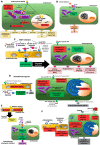MicroRNAs in Cancer Treatment-Induced Cardiotoxicity
- PMID: 32192047
- PMCID: PMC7140035
- DOI: 10.3390/cancers12030704
MicroRNAs in Cancer Treatment-Induced Cardiotoxicity
Abstract
Cancer treatment has made significant progress in the cure of different types of tumors. Nevertheless, its clinical use is limited by unwanted cardiotoxicity. Aside from the conventional chemotherapy approaches, even the most newly developed, i.e., molecularly targeted therapy and immunotherapy, exhibit a similar frequency and severity of toxicities that range from subclinical ventricular dysfunction to severe cardiomyopathy and, ultimately, congestive heart failure. Specific mechanisms leading to cardiotoxicity still remain to be elucidated. For instance, oxidative stress and DNA damage are considered key players in mediating cardiotoxicity in different treatments. microRNAs (miRNAs) act as key regulators in cell proliferation, cell death, apoptosis, and cell differentiation. Their dysregulation has been associated with adverse cardiac remodeling and toxicity. This review provides an overview of the cardiotoxicity induced by different oncologic treatments and potential miRNAs involved in this effect that could be used as possible therapeutic targets.
Keywords: cancer therapy; cardiotoxicity; cardiovascular diseases; microRNAs.
Conflict of interest statement
The authors declare no conflict of interest.
Figures

References
Publication types
Grants and funding
LinkOut - more resources
Full Text Sources

